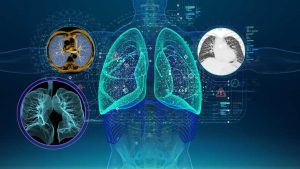While advancements in healthcare have come in leaps and bounds since the 20th century, there is perhaps none more exciting than what digital twin technology could offer. The healthcare industry has the potential to be revolutionized by this application of new advancements, which will ultimately lead to improved research capabilities and patient outcomes.
Defined as the virtual representation of a physical object or system across its life cycle, a digital twin is a computer program that uses real world data to create simulations that can predict the outcomes of a product or process. A concept initially utilized by NASA in the 1960s, this technology has grown exponentially in the last decade, now further expanding into the world of healthcare.
Beginning in 2014 with The Living Heart Project headed by Dassault Systémes, healthcare research with digital twins has broadened to include organs such as the brain and lungs, as well as projects for virtual parts of the body. With these models, doctors have the potential to discover undeveloped illnesses, experiment with treatments, and improve surgical outcomes. They allow clinicians to test multiple treatments across a vast range of therapies, equipment, and interventions by comparing possible outcomes without taking any risks in terms of patient safety. Ultimately, care can become more precise, targeted, and based on the most accurate data available when digital twins are utilized.
The benefits of this data-driven model appear to be limitless. Information gathered regarding an individual’s medical history can aid providers in identifying gaps in care and aid in integrating all sources of data to create a complete picture of that individual’s needs. Medical devices can also be designed to meet an individual’s unique anatomical and physiological structure based on previously compiled data. Limitations of clinical trials—known to be expensive, time-consuming, and often limited by inability to meet enrollment goals—could be alleviated by utilizing digital twins as trial participants.
While the development of a complete digital twin of an individual has yet to be achieved, the roadmap is being built for such a reality. Benjamin Meder, a cardiologist who is testing digital heart software created by Siemens, sees the possibilities. “Imagine that in the future, we have a patient with all their organ functions, all their cellular functions, and we are able to simulate this complexity. We would be able to predict weeks or months in advance which patients will get ill, how a particular patient will react to a certain therapy, which patients will benefit the most. That could revolutionize medicine,” he said.























